| Sign In | Join Free | My frbiz.com |
|
| Sign In | Join Free | My frbiz.com |
|
| Categories | BS 3262 |
|---|---|
| Brand Name: | HUA QUN |
| Model Number: | HQ-107 |
| Certification: | ISO9001 |
| Place of Origin: | China |
| MOQ: | 1 ton |
| Price: | Pending |
| Payment Terms: | L/C, Western Union, T/T |
| Supply Ability: | 100 tons per day |
| Delivery Time: | 3-7work days |
| Packaging Details: | 25kg per bag,40 bags per ton,25-27 tons per 1x20ft container |
| Soft Point: | 90~125℃ |
| Gloss Level: | High gloss finish |
| Usage: | stripping marking |
| Other Names: | Thermoplastic Traffic Paint |
| Storage: | Dry Environment |
| Material: | petroleum resin |
| Packing: | 25kgs/bag |
| Coating Rate: | About 180-200m2/ton |
| Company Info. |
| Guangdong Hua Qun Traffic Facilities Co., Ltd. By Shares |
| Verified Supplier |
| View Contact Details |
| Product List |
Application of Thermoplastic Paint in Road Markings
Thermoplastic paint have emerged as a crucial material in the field of road markings,
offering numerous advantages that contribute to the safety and
efficiency of road transportation systems.
I. Introduction to Thermoplastic Paint for Road Markings
Thermoplastic paint used in road markings are typically composed of resins, pigments,
fillers, and additives. The resins provide the adhesive and
cohesive properties, ensuring the coating adheres firmly to the
road surface and maintains its integrity. Pigments are added to
give the markings their distinct colors, such as white for lane
dividers and yellow for center lines, enhancing visibility. Fillers
improve the durability and mechanical strength of the coating,
while additives may be used to modify properties like drying time
and resistance to weathering.
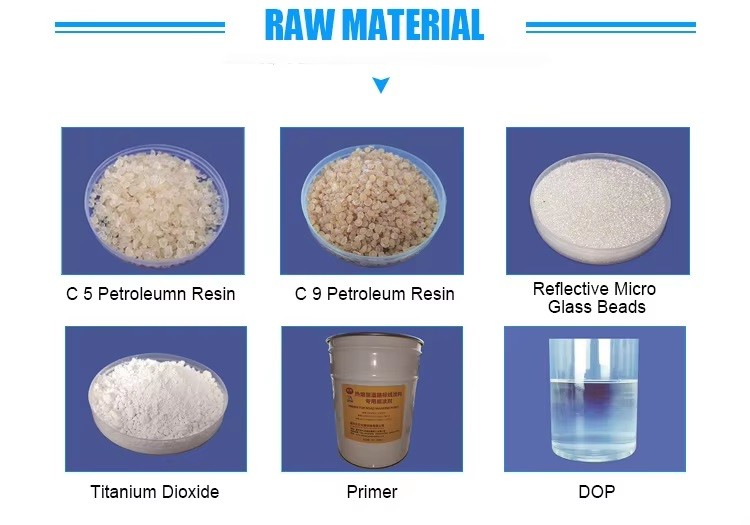
II. Application Process
1. Surface Preparation: Before applying the hot melt coating, the
road surface must be thoroughly cleaned. This involves removing
dirt, debris, oil, and any loose materials. Sweeping, pressure
washing, or using specialized cleaning equipment is common. A dry
and clean surface is essential for proper adhesion of the coating.
2. Melting and Application: The hot melt paint material is heated
in a specialized melting kettle to a specific temperature range,
usually between 180 - 220 degrees Celsius. Once melted, it can be
applied using various methods. One common approach is through a
thermoplastic sprayer or a squeegee. For example, in the case of
spraying, the molten coating is evenly sprayed onto the road
surface in the desired pattern. When using a squeegee, the melted
coating is poured onto the road and then spread evenly to the
required thickness, usually around 1.5 - 3 millimeters for standard
road markings.
3. Drying and Curing: After application, the hot - melt coating
cools and solidifies rapidly. This quick - drying property
minimizes the disruption to traffic flow during the marking
process. Once solidified, the coating forms a durable and hard
layer that can withstand the heavy loads and friction from vehicle
tires.

III. Advantages in Road Markings
1. High Durability: Thermoplastic paints are highly resistant to
wear and abrasion caused by the continuous passage of vehicles.
They can maintain their visibility and integrity for an extended
period, reducing the need for frequent repainting. This durability
is especially important on high - traffic roads and highways.
2. Excellent Visibility: The pigments in hot - melt paint provide
bright and clear colors that are highly visible under various
lighting conditions, including daylight, headlights at night, and
in wet weather. This enhanced visibility helps drivers clearly
identify lanes, crosswalks, and other important road markings,
improving road safety.
3. Adhesion to the Road Surface: The strong adhesion of hot melt
coatings to different types of road surfaces, such as asphalt and
concrete, ensures that the markings stay in place. They are less
likely to peel off or become damaged due to weather changes or the
mechanical stress of traffic.
4. Weather Resistance: These paints are designed to withstand a
wide range of weather conditions, including rain, snow, sunlight,
and temperature variations. They do not fade easily and can
maintain their performance characteristics over time.
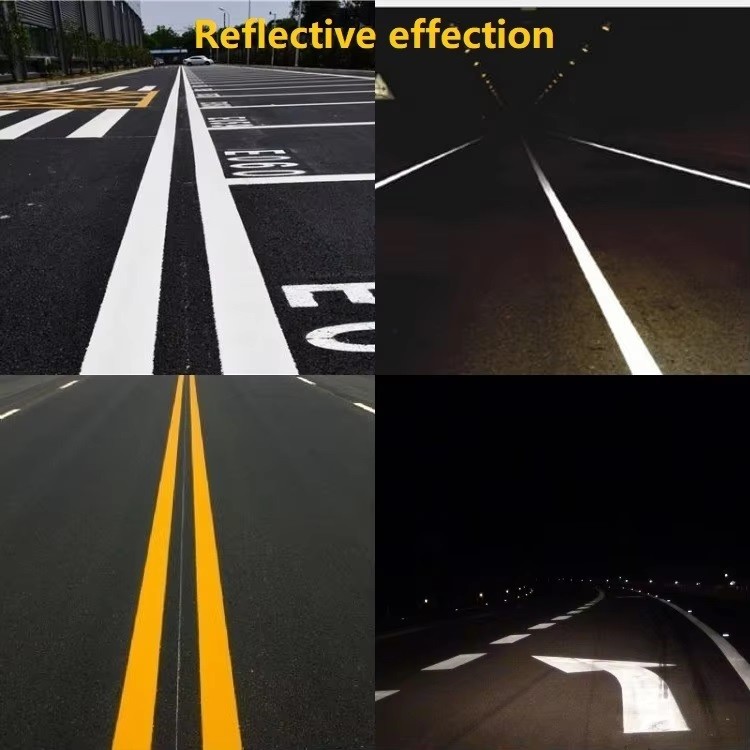
IV. Specification
| Density (g/cm3) | 1.8-2.3 |
| Softening point(℃) | 90-125 |
| Compressive strength(MPa) | ≥12 |
| Glass bead content(%) | 0-30%(Customized) |
| Liquidity | 35±10 |
| Packing | 25kg/bag±0.2 |
| Color | White/Yellow/Blue/Green/Customized |
| Executive standard | JT/T280-2004/AASHTO/BS3262/Customized |
| Appearance | Powder |
| Construction temperature | 180℃-220℃ |
| Whiteness | 70-85(Customized) |
| Inverse coefficient | 50-550 |
| Warranty | 365days |
| Storage Method | Avoid light and moisture |
| Packing size | 45×70×5cm |
V. Conclusion
In conclusion, thermoplastic paints have revolutionized road
markings with their unique combination of durability, visibility,
adhesion, and weather resistance. Their proper application ensures
clear and long - lasting road markings, which are vital for the
safe and efficient operation of our road networks. Continued
research and development in this area are expected to further
improve the performance of hot - melt coatings in road
applications, contributing to enhanced road safety for all road
users.
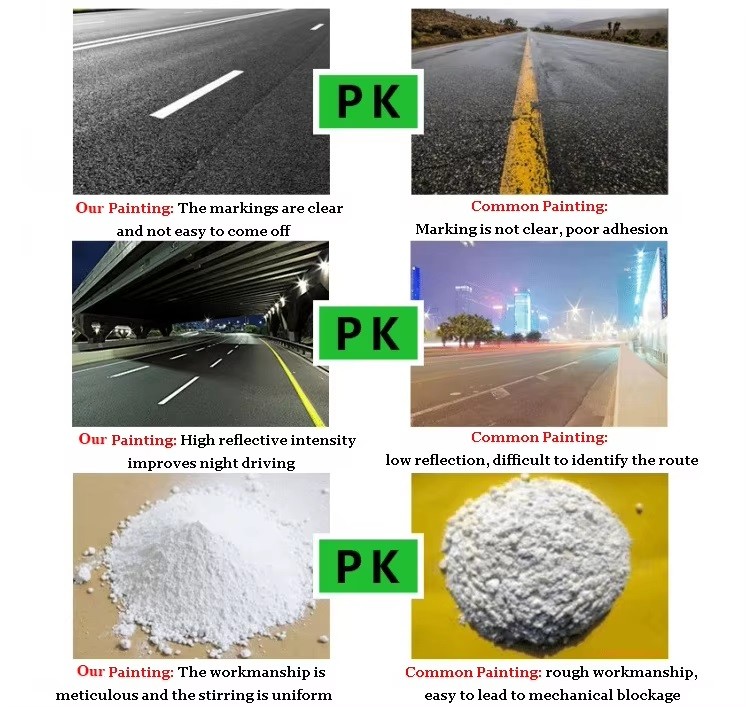
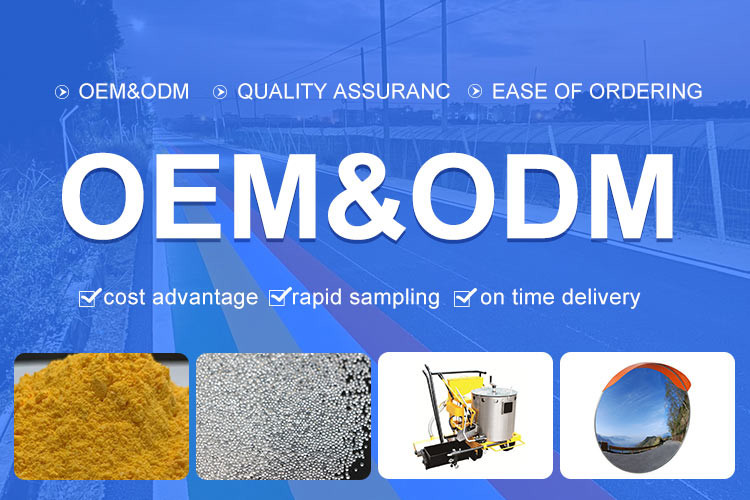
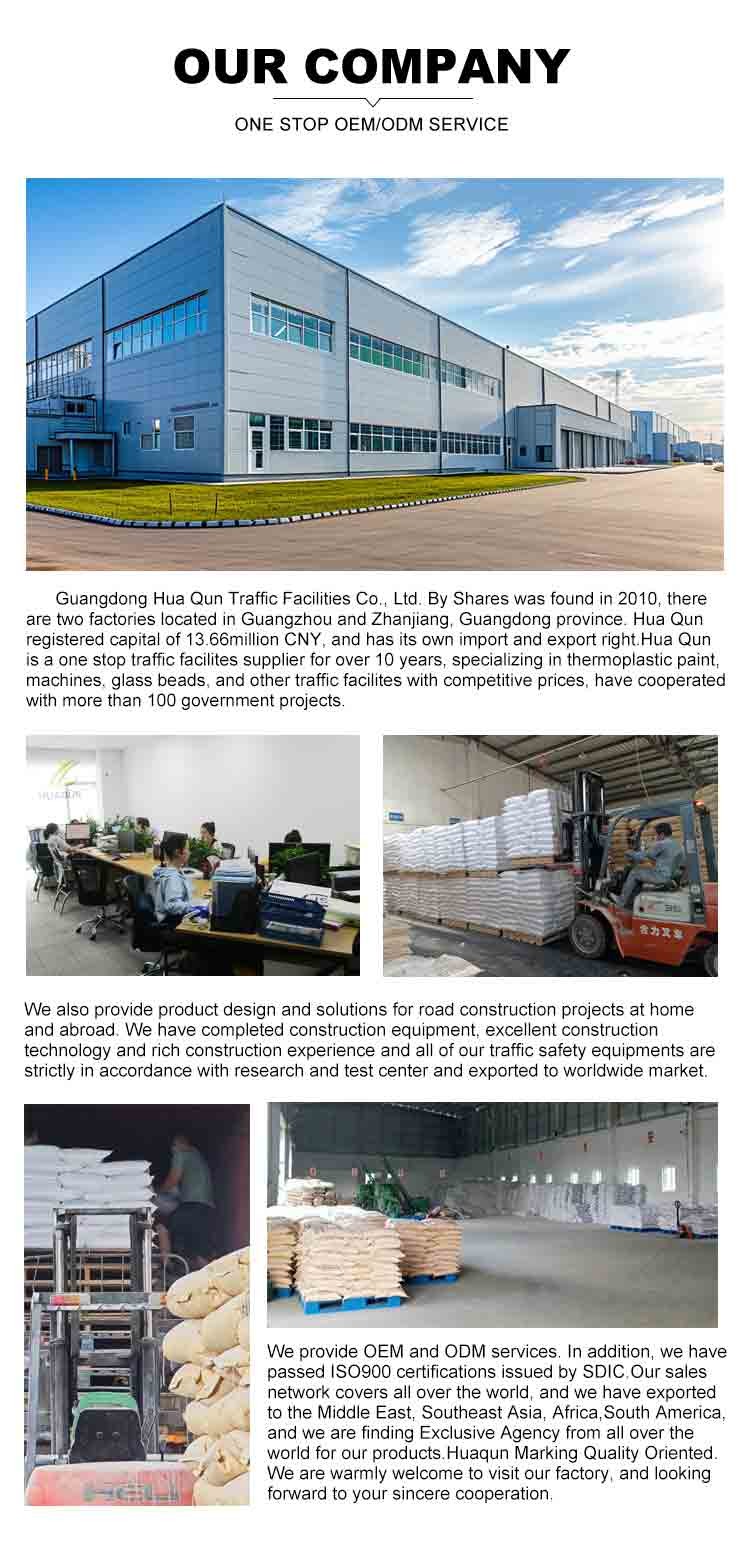
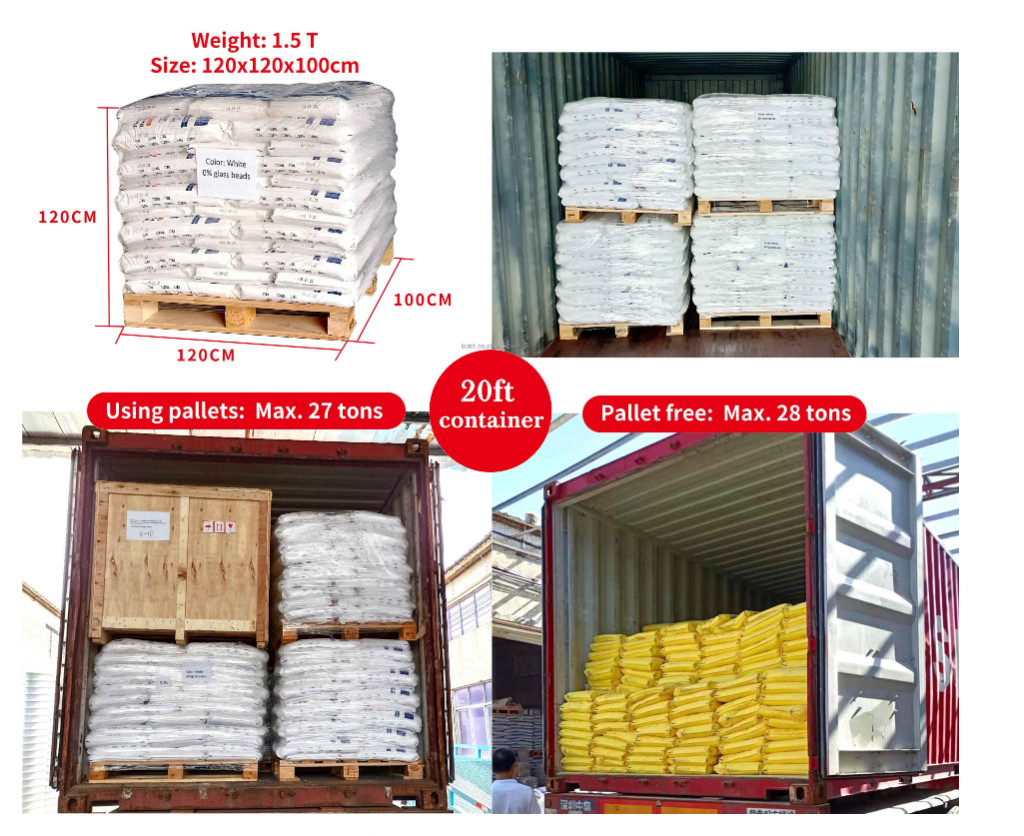
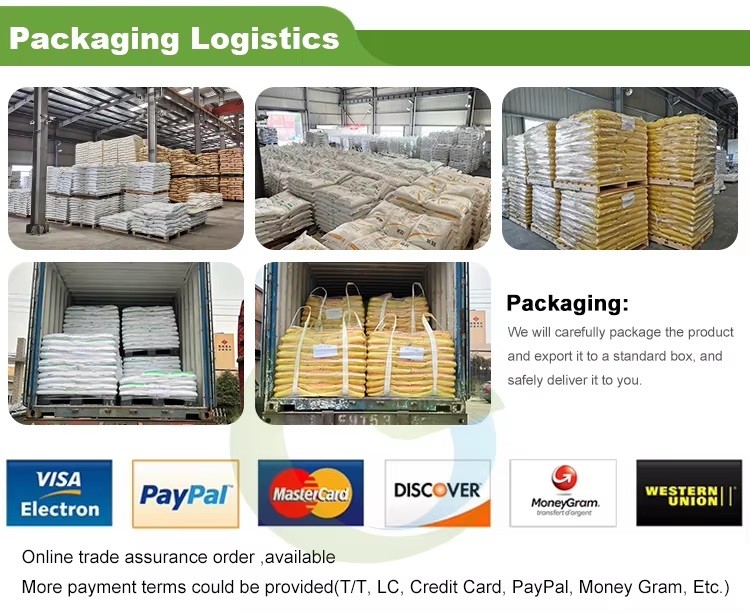
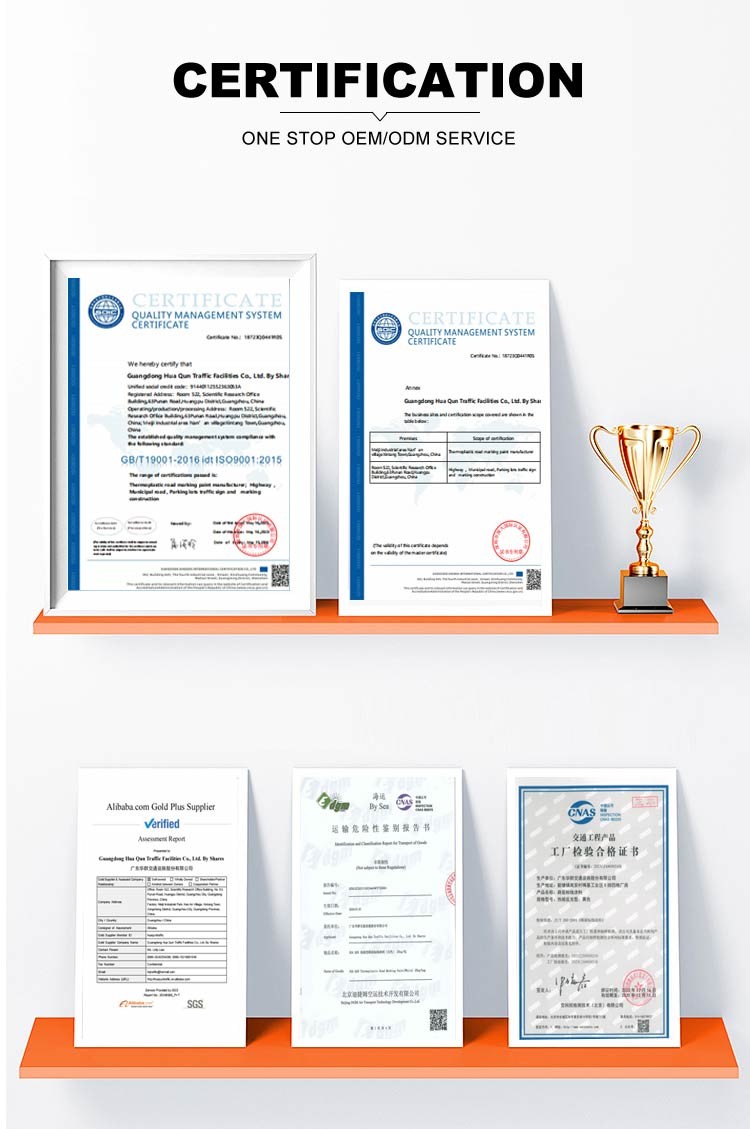

|